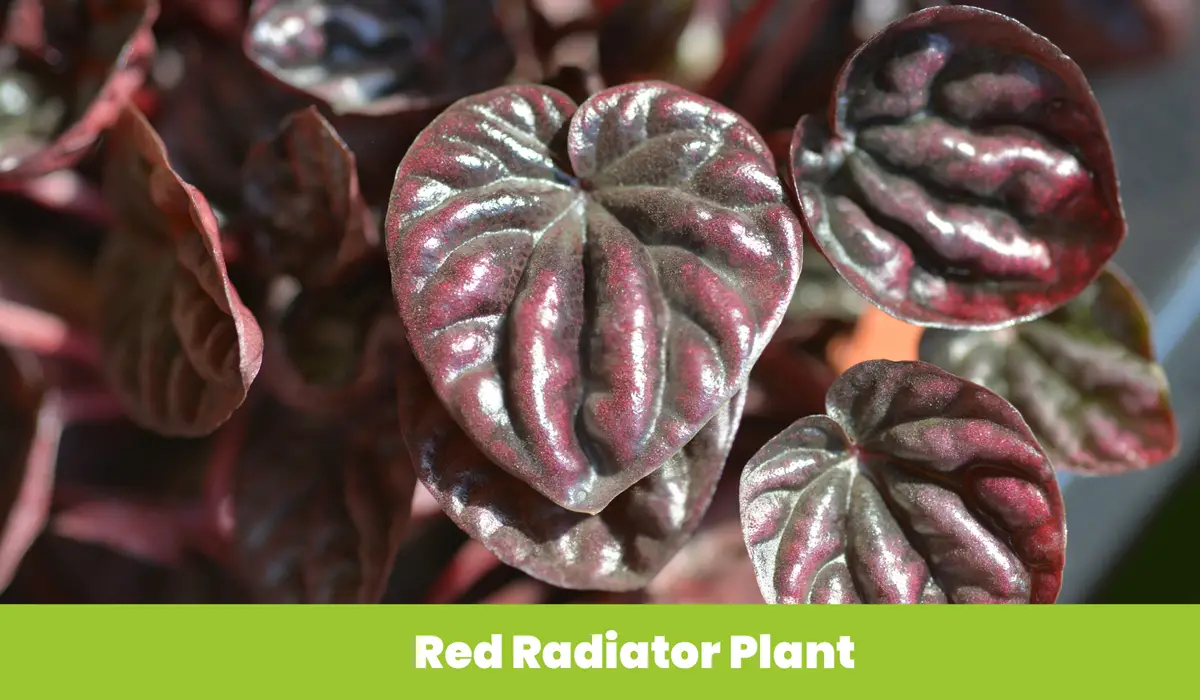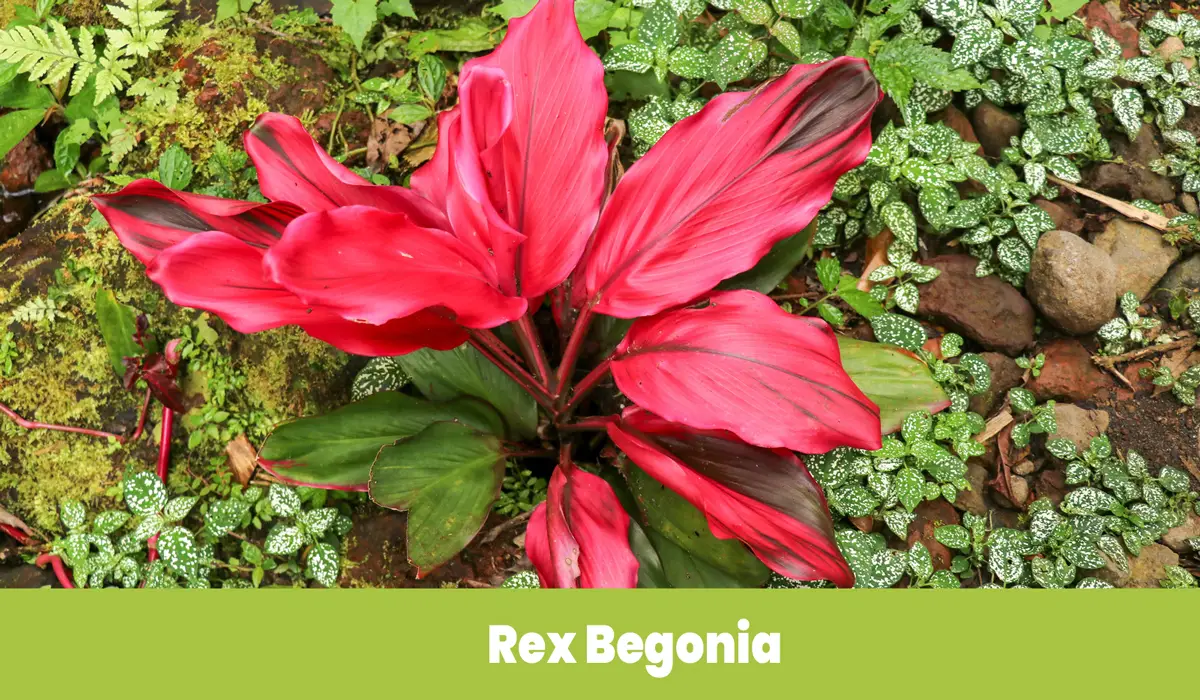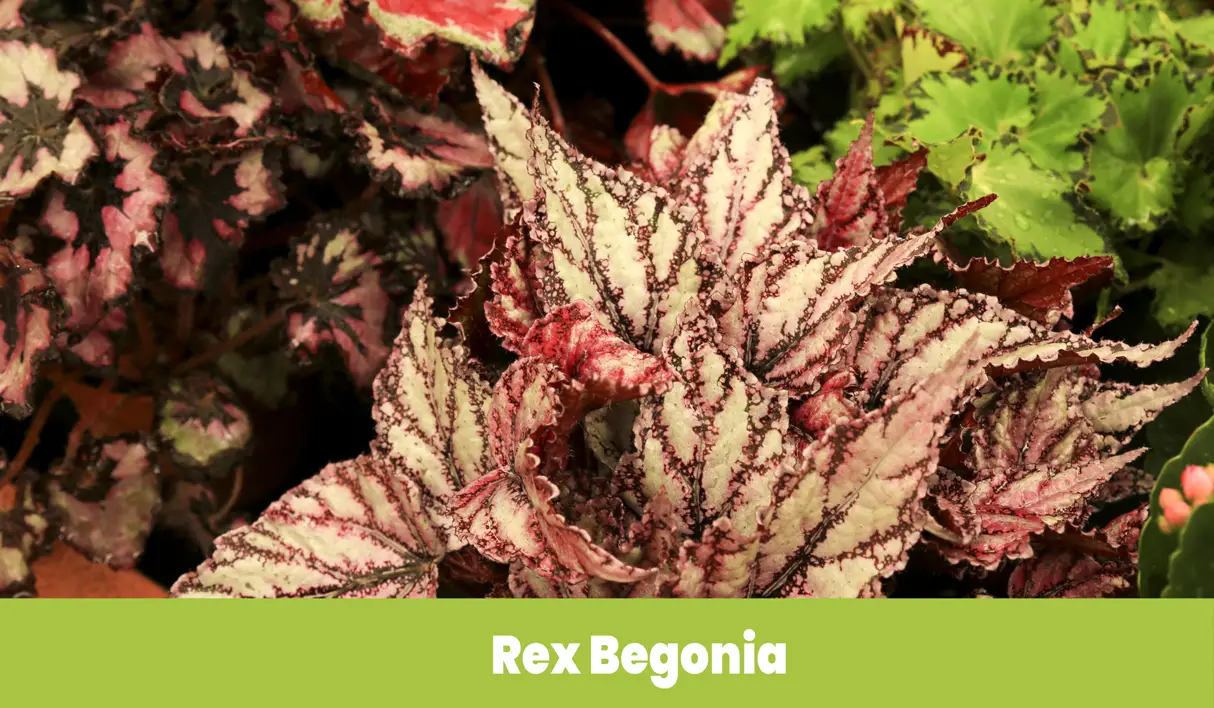11 Houseplants with Red Leaves

This post follows our research editorial guidelines.

If you ask the average person to name a red plant, the most common answer you will get is a red rose. However, there are a lot of different plants that offer red leaves.
I’ve put together a list of some of the best options if you want to add a bit of color to your home or just enjoy red plants. Not to worry though, while these leaves may look dangerous, many are harmless like these plants that look like poison ivy.

Table of Contents
Some of these are solid red, much like red roses, while others have shades of other colors in them too. A few also play on different tones of red, ranging from a bright, nearly orange to a dark burgundy/mahogany type red. If your looking for a different tone check out these 11 purple leaf plants for ones you may love.
1. Polka Dot Plant (Hypoestes Phyllostachya)

This interesting little plant introduces some color to your home and adds a very nice polka-dotted pattern. The most common version of this plant features a mild pink base with green dots on it. However, you can also get varieties with a red, dark red, purple, or even white base with the same green dots on them.
These can easily be grown in a small container if you are growing them indoors, but they can also fill up a larger pot outside as well. These plants grow into dense little bunches, so they are best planted on their own otherwise, they can cover other plants growing alongside them.
This will be an excellent plant to grow if you live in a warmer climate area, as they do best in bright, warm areas. If you are in a colder region, then consider growing these indoors. If you are growing them outdoors in colder regions, you might need to get new plants every year as they rarely survive the cold.
Red Radiator Plant (Peperomia)

The most popular member of the peperomia plant is the watermelon peperomia. The leaves, as the name suggests, resemble the pattern on a watermelon with white, silver, and green stripes.
The red radiator peperomia is something that is very popular with people who want a dark red plant that is easy to maintain. Some varieties of this plant can indeed be tough to maintain because they need high humidity levels. The red radiator plant and many other varieties of peperomia do just as well in normal indoor conditions.
They are easy to maintain and will fill a small container nicely.
Ti Plant (Cordyline Minalis)

This is an excellent choice if you want something a bit more colorful to decorate the exterior of your house. These plants can grow to be quite tall, and they have long, slender leaves (usually 1-2.5 feet in length), so you will need a bit of space when planting these. The leaves are very thick, and most varieties have leaves that are 4-5 inches in width.
They can also be used as indoor plants if you have room for them. This is a very hearty plant and can easily withstand both heat and cold. The most common color is red, but it is also available in purple, pink, and green.
Nerve Plant (Fittonia)

If you are looking for a small houseplant with an eye-catching pattern and red color, you can’t go wrong with the nerve plant. These plants have a green base, and the nerves in the leaves bear the color.
The most common color for these plants is white, but they are also available in red, purple, and pink. The colored veins create an intricate pattern in the leaves which looks amazing in any color, but it is particularly attractive in red.
They are short with medium-density leaf growth. This makes them ideal for indoor situations or even table plants. They require little maintenance and will easily provide color and warmth all year round.
Red Star Dracaena (Cordyline Australis)

Native to Australia and New Zealand, these plants require some time, but it is well worth the investment. What sets these plants apart is their size and structure.
They develop long thin leaves that resemble swords, and they can grow quite large. When planted outside or in a large pot, it is not unusual for these plants to reach 8-10 feet tall.
As they mature, they also start to develop a trunk portion. The leaves stem directly out of the stem/trunk and can also reach 3-4 feet in length.
From time to time, you will notice small fragrant flowers developing at the top of the plant, which is always enjoyable. This very sturdy plant can easily withstand heat and cold; however, it does better with high heat than extreme cold.
It requires very little water and overall maintenance. If you have an outdoor spot that you want to use to really change the aesthetics of the landscape, this is a great option to consider.
Poinsettia (Euphorbia Pulcherrima)

For some people, there is nothing better than the classic red in roses. You can’t go wrong with a poinsettia plant if you are after a bright red flower that will add life to even the dullest of backgrounds.
This plant doesn’t actually have a flower, it has a bract. These are essentially leaves, but they are red in color as opposed to the regular green leaves that grow at the base of the plant. The red doesn’t last all year.
The bracts (red leaves) bloom during the shorter winter months and will last as long as the yellow center (the cyathia) hasn’t been pollinated. The bright leaves help attract insects, and once the plant is pollinated, the red bracts will fall off.
These plants do require a relatively high level of care and maintenance. They need a good amount of water, and they need light. These can be outdoor or indoor plants, but you need to be extra careful if you experience harsh winters in your region.
Red Flash Caladium (Angel Wings)

The red flash caladium has a pattern somewhat similar to the nerve plant. However, this plant is found primarily with red veins instead of white veins with the nerve plant.
The veins in the leaves of the red flash caladium plant are densely packed in the center of the leaf, with some branching out, while the outer edges of the leaves remain green. The leaf of this plant can also be spotted with white and pink dots, which also look quite nice with a green and red background.
This plant also has much larger leaves than the nerve plant and can grow even bigger if planted out in the open. Being a native to Southern America, this plant does best in warm climates, though it can withstand the cold as well if you give it enough care.
Rex Begonia (Begonia)

The Begonia family will interest you if you enjoy variegated patterns and colorful leaves. The rex begonia is a particularly attractive variety of this plant with dark red, almost maroon leaves.
The leaves can be quite large, often reaching 5 inches in length, even though the plant itself is quite small. The outer edges of the leaf will have a darker red to them, while the center of the leaf will have a soft red or even slightly pink color.
The dark veins run throughout the leaf, creating a delightful pattern. This plant does very well indoors and doesn’t require much maintenance. This is a slow-growing plant, so you don’t need to worry about changing pots in just a few months. It can easily last in a small to medium-sized container for years before needing more room.
Croton (Codiaeum Variegatum)

The croton plant is a wild shrub that is native to Oceania and Southeast Asia. These plants can become quite large in the wild, often reaching 10 feet in height.
Depending on the variety that you get, you can grow these as large outdoor plants or much smaller indoor plants. However, even indoors, you will need a large container to allow this plant to reach its full potential.
Croton plants are available in a lot of different colors, and there are some multi-colored varieties to choose from. Several shades are available if you are looking for a red croton.
With this plant, you won’t get a very bright red, but the leaf’s slightly translucent yet glossy finish creates a unique red color. These are tough plants and require very little maintenance, but give them enough water from time to time to help them with their fast growth rate.
Red Aglaonema (Aglaonema)

The red aglaonema, also known as the red siam aurora, is an excellent choice if you want a tough plant that will do great in low-light and indoor conditions. The aglaonema family has a lot of different colored family members, but red is particularly popular. The red aglaonema has a glossy green leaf with red dots on it.
With these plants, you might also find traces of pink and maroon. While this is a slow-growing plant, it can get 3-4 feet tall with enough time.
Flame Nettle (Coleus)

This is another excellent option if you enjoy variegated leaves. The flame nettle plant is available in red, magenta, or bright red.
When paired with the lime green outer edges and variegating, it makes for an outstanding look. Some varieties will have lime green edges, purple leaves, and bright red center veins. These are very popular for their unique patterns and have some of the most impressive foliage you can get from an indoor plant. However, these plants are rather sensitive, so you do have to spend a bit more time in care and maintenance.
Are Red Leaves Usually Poisonous?

Red leaf’s do not always contain poisons that can be harmful to you or your pets. In fact, some of the most poisonous plants on the planet have green leaves.
Do Red Leaf Plants Produce More Oxygen?
While they make look great read leaves will not inherently produce more oxygen. The color of the leaf is simply a result of the natural pigmentation in the plant and the amount of chlorophyll that the leaves contain. If you’re looking for cleaner air, try growing a snake plant, their wonderful oxygen producers.
Producing more oxygen is more heavily influenced by the size of the leaf/plant and the amount of photosynthesis that the plant is undergoing. Plants with a good supply of nutrients, air, and light and larger/more leaves will produce more oxygen.
Do Red Leaves Need More Sunlight?
Red leaves may not produce a lot of chlorophyl but this doesn’t mean they need more light then their green leaf counterparts. As long as lighting conditions are good, green leaves and red leaves absorb as much light as they need for proper photosynthesis.

Before you go!
7 Best Greenhouse Shelf Ideas: Grow More With Less Space
Uncover the Best Plastic Greenhouses
11 Drought Tolerant Shrubs to Grow in Warm Climates
11 No Mow Ground Cover Plants To Replace Your Grass With